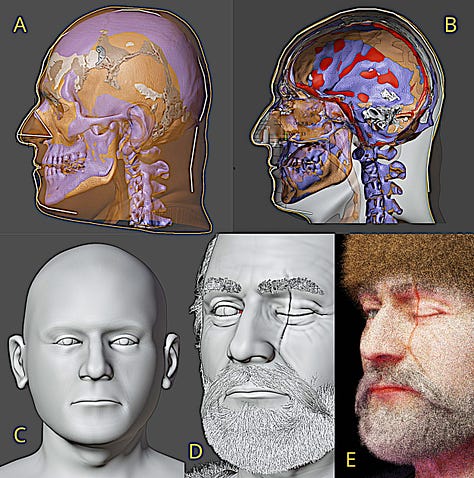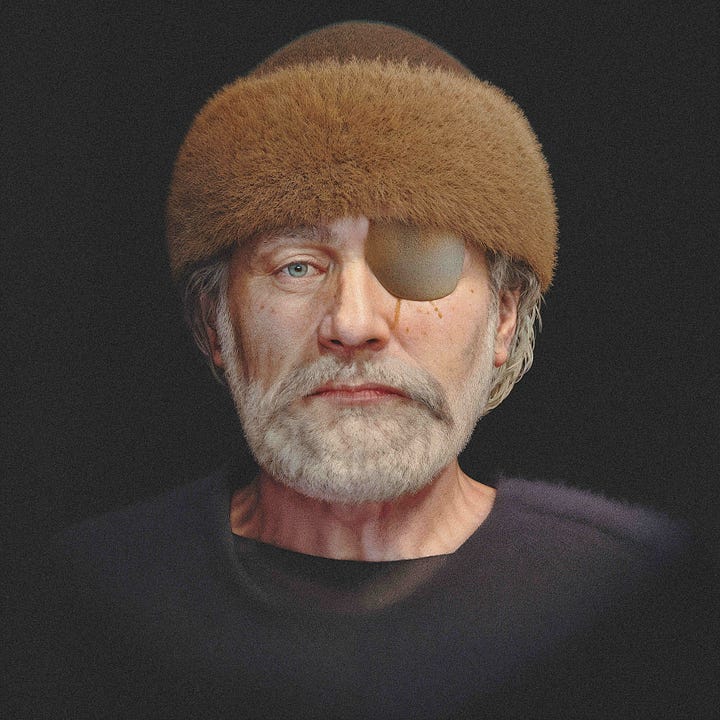Meet the forefather of the tank! Face of general who defeated the might of Rome seen for first time in 600 years
Jan Žižka never lost a battle, and defeated professional soldiers with his army of peasants
THIS is the true face of the general who defeated the Catholic church with an army of peasants, invented the forerunner of the tank, and never lost a battle.
Bohemia, now part of the Czech Republic, became a hotspot for religious revolt in the 15th century thanks to the Hussites, who opposed many aspects of Catholic doctrine.
Declared heretics by Pope Martin V, the Hussites faced and defeated multiple crusades, and even went on the offensive, before the church compromised and struck a deal with them.
And Jan Žižka was perhaps their greatest champion, facing down the invaders with a peasant army, and anticipating the rise of the tank by using armoured wagons in battle.
He had only one eye – and would eventually lose that too – but remained in command, never losing a battle, and today he’s honoured as a Czech national hero.
Now, to mark 600 years since his death, an international team of scientists has rebuilt his face, using his skull to reveal what he looked like in life.
Jiří Šindelář, from GEO-CZ, a Czech heritage and preservation firm, suggested it was the truest depiction of Žižka since his death.
He said: “Žižka lived at the turn of the 14th and 15th centuries, and died in 1424. There is no depiction from this time.
“The oldest is a head statue, which was part of a larger sculptural work – probably a large emblem of the town of Tabor.
“This dates back to the first quarter of the 16th century, 100 years after the warlord's death.

“We have a number of paintings, but these are the rather romantic imaginings of artists.”
His co-author, Brazilian graphics expert Cicero Moraes, added: “Ours is the first complete, three-dimensional forensic facial approximation.”
He continued: “The basis for the approximation was an incomplete skull, scanned in 3D using the photogrammetry technique.
“To recover the missing regions, we used a structural reconstruction technique based on CT scan data from living people.



“Thanks to this, we were able to statistically recover the skull and this served as the basis for the approximation.”
With the skull virtually rebuilt, different methods were combined to create the final face.
One approach used CT scan data from living donors to show how the general’s face would have sat upon his skull.
RELATED ARTICLES
Cruellest man who ever lived? True face of Ivan the Terrible revealed
Face of 'only Egyptian pharaoh to die in battle' REVEALED
Meet the architect of HELL: True face of Dante Alighieri revealed by science
The other approach, anatomical deformation, involved warping a digital reconstruction of a donor’s head until the skull matched Žižka’s.
The resulting faces were then combined to give an objective reconstruction, in greyscale, without hair and with eyes closed.
These subjective elements were then added in, breathing new life into the dead hero.







Moraes said it was a “contemplative” and “intelligent” face.
Šindelář added: “Personally, I am surprised that the resulting scientific approximation of the face is very similar to older depictions in history books and sculptures.
“Contrary to some stylisation in statues, the resulting approximation – thanks to the advances in 3D graphics – is very realistic and we feel that we are looking into the face of a real person.”
He added that the skull itself matched the story of Žižka’s life, right down to the eyes.
He said: “The anthropological assessment shows exceptional damage to both orbits and is fully consistent with all the written accounts we have of the Hussite leader.
“The newly performed dating by the C14 method has shown that this is a person who died around 1424, the year of the famous warlord's death.”
Žižka – whose life was immortalised in the film, Medieval – is today honoured with a statue at the site of one of his greatest victories, on Prague’s Vítkov Hill.
It’s one of the largest statues of its kind on Earth.
Šindelář described the significance of Žižka
He said: “Although he commanded a non-professional army, he defeated large and well-armed royal armies with his ingenious military strategy.
“He managed to face even the crusades sent by the pope and the emperor.
“Gradually, he also switched to offensive warfare and made several military forays across Europe.



“The Hussite armies were defeated only after his death.”
However, Šindelář said, there was a dark side to his legacy.
He said: “In our travels across the country we almost always encounter his legacy, and most of the time it is a negative reference.
“Here Jan Žižka's army destroyed a castle, here a monastery, here a church, here a whole town.
“Most of the important medieval monuments in the Czech Republic were destroyed thanks to Jan Žižka.”
After the war, moderate Hussites and Catholics had legal equality in Bohemia, which lasted until Battle of White Mountain in November 1620, when Bohemian forces were defeated.

Šindelář and Moraes published their study in the journal OrtogOnLineMag.
Their Czech co-authors are Matěj Šindelář, also from GEO-CZ, Zuzana Thomová from the South Bohemian Museum, and Jakub Smrčka of the Hussite Museum.
Also credited were Thiago Beaini of the Federal University of Uberlândia in Brazil, and Francesco Galassi of the FAPAB Research Centre in Italy.







